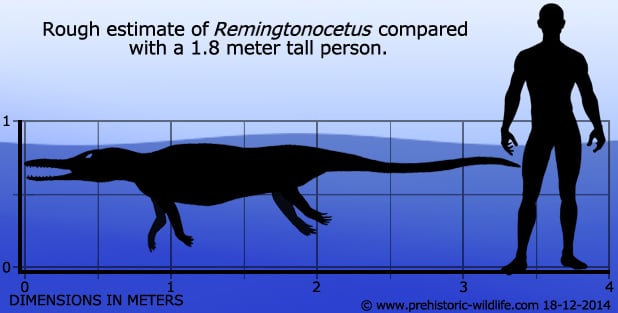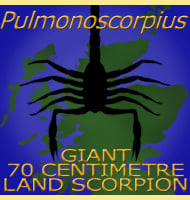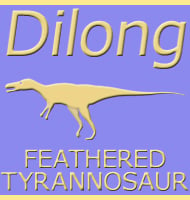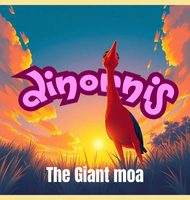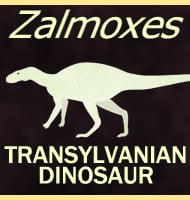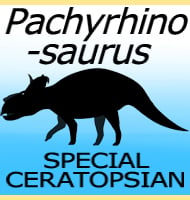In Depth
A very primitive whale form, Remingtonocetus is noted as being smaller and significantly more gracile than most of its relative genera. This more generalised observation is combined with he fact that all four limbs of Remingtonocetus were still well enough adapted for walking on land while the tail seems to have served little propulsive use for swimming. In a 2011 analysis of Remingtonocetus skull anatomy by Bajpal, Remingtonocetus was considered to have been an ambush predator that relied upon its hearing to detect prey. Remingtonocetus was named in honour of the naturalist Remington Kellogg.
Further Reading
- Lower Tertiary vertebrates from western India. - Monograph of the Palaeontological Society of India 3:1-48. - A. Sahni & V. P. Mishra - 1975. - Remingtonocetus harudiensis, new combination, a middle Eocene archaeocete (Mammalia, Cetacea) from western Kutch, India. - Journal of Vertebrate Paleontology 6(4):326-349. - K. Kumar & A. Sahni - 1986. - Middle Eocene Cetaceans from the Harudi and Subathu Formations of India. - The Emergence of Whales 213-233. - S. Bajpai & J. G. M. Thewissen - 1998. - Eocene stratrigraphy and archaeocete whales (Mammalia, Cetacea) of Drug Lahar in the eastern Sulaiman range, Balochistan (Pakistan). - Contributions from the Museum of Paleontology, University of Michigan 30(11):269-319. - P. D. Gingerich, M. Ul-Haq, I. H. Khan & I. S. Zalmout - 2001. - Cranial Anatomy of Middle Eocene Remingtonocetus (Cetacea, Mammalia) from Kutch, India. - Journal of Paleontology 85(4):703-718. - S. Bajpai, J. G. M. Thewissen & R. W. Conley - 2011.
